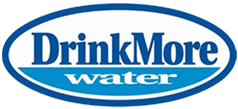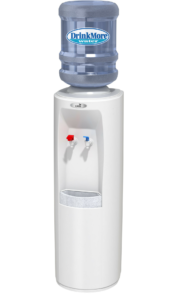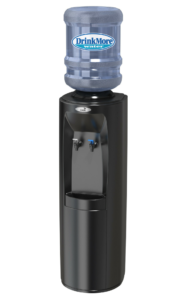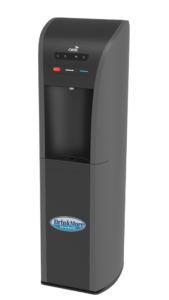<span”>If you watch TV or read the news, you just may think so. Couldn’t be further from the truth. Purified Water is defined by the US Pharmacopeia as having less than 10 PPM (that’s parts per million or milligrams/liter) of total dissolved solids (TDS). In order to achieve that level of purity, you have to use expensive purification technologies like reverse osmosis or distillation or deionization. There are very few municipalities that have invested in these kinds of technologies for two very simple reasons. First, it simply costs too much, and second, 99.5% of tap water is not being consumed by people – it’s being used for all sorts of other valid purposes – like flushing your toilet, washing your clothes, showering, hosing off the driveway (that, by the way, is not a valid purpose in my book), washing dishes, etc.
Why spend tons of money to make better water when your dishes don’t care, your toilet doesn’t care, your shower doesn’t care and your lawn doesn’t care?
At DrinkMore Water, we have invested heavily in state-of-the-art reverse osmosis purification equipment because we’re focused on the 1/2 of one percent of the water that people actually drink!! We start with the water that the municipal water suppliers call their final product!! We could use spring water, river water, rain water, frogwater – virtually any kind of water and end up at the same point – that’s how good our process is. It’s also a whole lot more environmentally friendly to use a municipal source that is piped right in to our plant (as opposed to say, spring water, which has to be trucked in using heavy duty tanker trucks). If society could take a step back in time and redesign its water supply systems – there would actually be two systems. One system would distribute very high quality water for drinking and cooking and the other system (using a completely separate set of pipes) would distribute much lower quality water for all of the other tasks.
So, back to the question – is purified water the same as tap water? The answer is most definitely no. I do not know of a single municipal tap water that meets the US Pharmacopeia definition for Purified Water. None. Our water not only meets the standard, we blow it away. Our water has 1 PPM of TDS. It is very, very pure.
Our process begins with municipal tap water in much the same way that paper begins from a tree or a steel beam begins from iron ore or cheese begins from milk or gasoline begins from crude oil. Paper is not a tree. Steel is not iron ore. Cheese is not milk. Gasoline is not crude oil. Purified water is not tap water. To suggest that it is, is simply ridiculous.
The real question is whether purified water is BETTER than tap water. That answer is simple. If you’re talking about the purity of the water and you’re talking about what you personally drink, then yes, purified water is BETTER than tap water. If you’re talking about eliminating as many contaminants as you can from the water you drink, then, yes, purified water is BETTER than tap water. If you’re talking about watering your yard, then there isn’t a big enough difference to say that purified water is way better. Your lawn, plants and dishes probably don’t care that much.
Now, all that being said, I think our local municipal water supplier – the Washington Suburban Sanitary Commission (WSSC) – does an excellent job of providing tap water. The tap water MEETS all EPA regulations as far as I know. But again, only 1/2 of one percent of all of the water they treat goes into our collective mouths. They don’t know which gallon (out of every 200) we’ll drink, so they have to bring all 200 gallons up to meet EPA standards for tap water. Literally, the water you flush down the toilet is the exact same quality as the water you would drink. Same stuff. My personal preference is clearly to drink the BEST quality water, period. That would be purified water. That would be DrinkMore Water.
What about spring water? That’s on tap for next time!!



